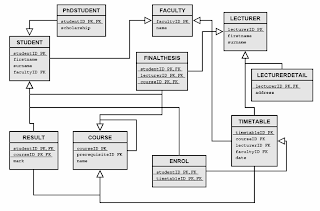
INTRODUCTION :
Data arrangement is all about arranging of big data properly as in all organization there is a lot of data movement so, its arrangement becomes necessary.
STEPS OF DATA ARRANGEMENT:
1. Extraction of data from various data sources .
2. Removal of noise.
3. Data aggregation.
4. Storage in database system, data warehouse etc.
5. Representation of data.
Model of data arrangement:
Data arrangement is a multidisciplinary field, drawing work from areas including database technology, machine learning, statistics, pattern recognition, information retrieval, neural networks, knowledge-based systems, artificial intelligence, high-performance computing, and data visualization. This technique for the discovery of patterns hidden in large data sets, focusing on issues relating to their feasibility, usefulness, effectiveness, and scalability.
VARIOUS FORMS IN WHICH DATA CAN BE ARRANGED:
1. Table form(rows/columns)
2. Flat files
3. RELATIONAL DATABASE SYSTEM
4. DATAWAREHOUSE
5. BIG DATA SERVERS
6. FLOW CHARTS
7. SNOWFLAKE SYSTEM
SOME BASIC TERMINOLOGIES TO BE KNOWN:
Data cleaning: also known as data cleansing, it is a phase in which noise data and irrelevant data are removed from the collection.
Data integration: at this stage, multiple data sources, often heterogeneous, may be combined in a common source.
Data selection: at this step, the data relevant to the analysis is decided on and retrieved from the data collection.
Data transformation: also known as data consolidation, it is a phase in which the selected data is transformed into forms appropriate for the mining procedure.
Data mining: it is the crucial step in which clever techniques are applied to extract patterns potentially useful.
Pattern evaluation: in this step, strictly interesting patterns representing knowledge are identified based on given measures
WHY DATA ARRANGEMENT IS PERFORMED??
1. Easy access of big data.
2. Fast access of big data.
3. Knowledge generation becomes easy.
4. Duplicate data is removed.
5. Data integrity is maintained.
6. Query support.
7. Data optimization.
8. Data arrangement is done so that central database access becomes easier.
RELATIONAL DATABASE ARRANGEMENT:
The arrangement of data in the form of rows and columns is done through relational database system, it is the most widely used method of data arrangement in which data is stored in tabular form so its access becomes easier. There are various database systems available which understand the structured query language (SQl) for their data retreival and insertion.
Conclusion:
Data arrangement is basically done so that its retrieval becomes easier and can be easily understandable by its operator or manager, proper arrangement of data leads to proper knowledge generation and thus leads to wisdom.
No comments:
Post a Comment
leave your opinion